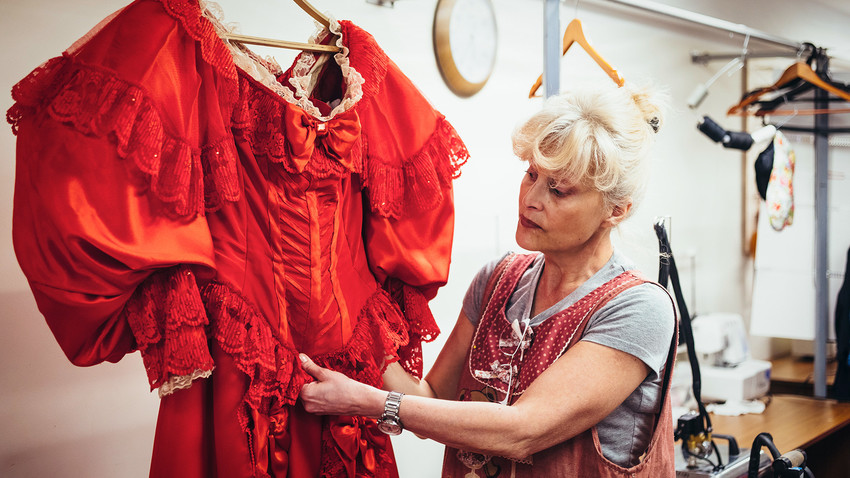

Every theater lover is thrilled by the chance to go backstage and see what’s happening there. However, sneaking a glimpse behind the scenes at the Maly Theater is extremely rare, even for journalists. The theater's artistic director and legendary actor, Yuri Solomin, believes that people shouldn't know how stage magic is created. Otherwise, the magic evaporates.
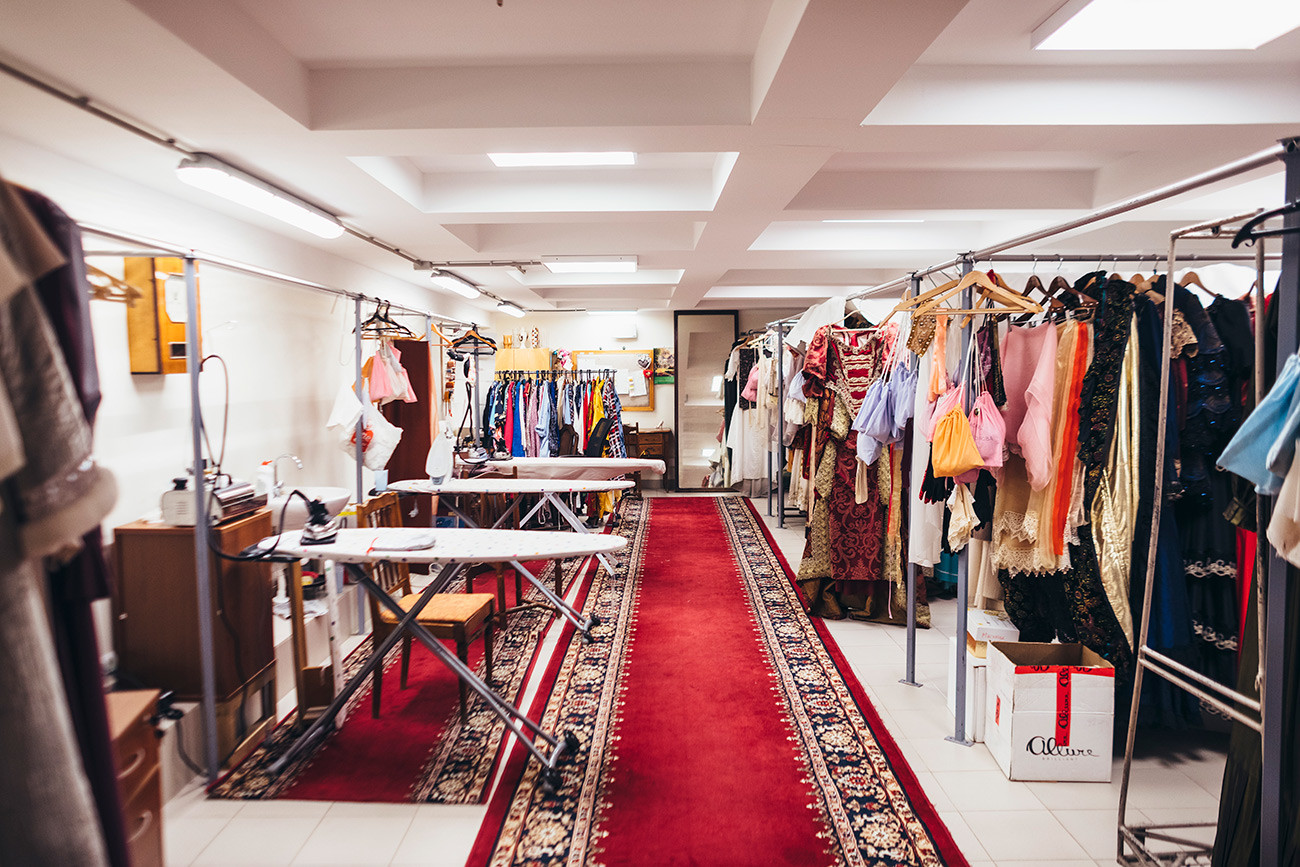
The Maly Theater has been around for almost two centuries. While the official opening took place in 1824, the theater’s first troupe appeared in 1756, though based at Moscow University. From its inception, the theater has focused on the production of classical plays: “The Marriage of Figaro” by Beaumarchais, and Shakespeare's “Hamlet”; as well as later, “Woe from Wit” by Alexander Griboyedov, “The Government Inspector”, and “Marriage”, both by Nikolai Gogol, and also plays by Alexander Ostrovsky and, of course, works by Anton Chekhov.

The Maly is a repertory theater, with each production running for many years. Its current season features more than 20 plays, and the costumes for each are ready and waiting for their moment in the limelight.

The theater's museum collection boasts over 200 historical costumes. Most are in excellent condition, despite years of use, and some are even brought out of the archive if a play is restored to the repertory. The oldest costume in the collection dates to 1849.
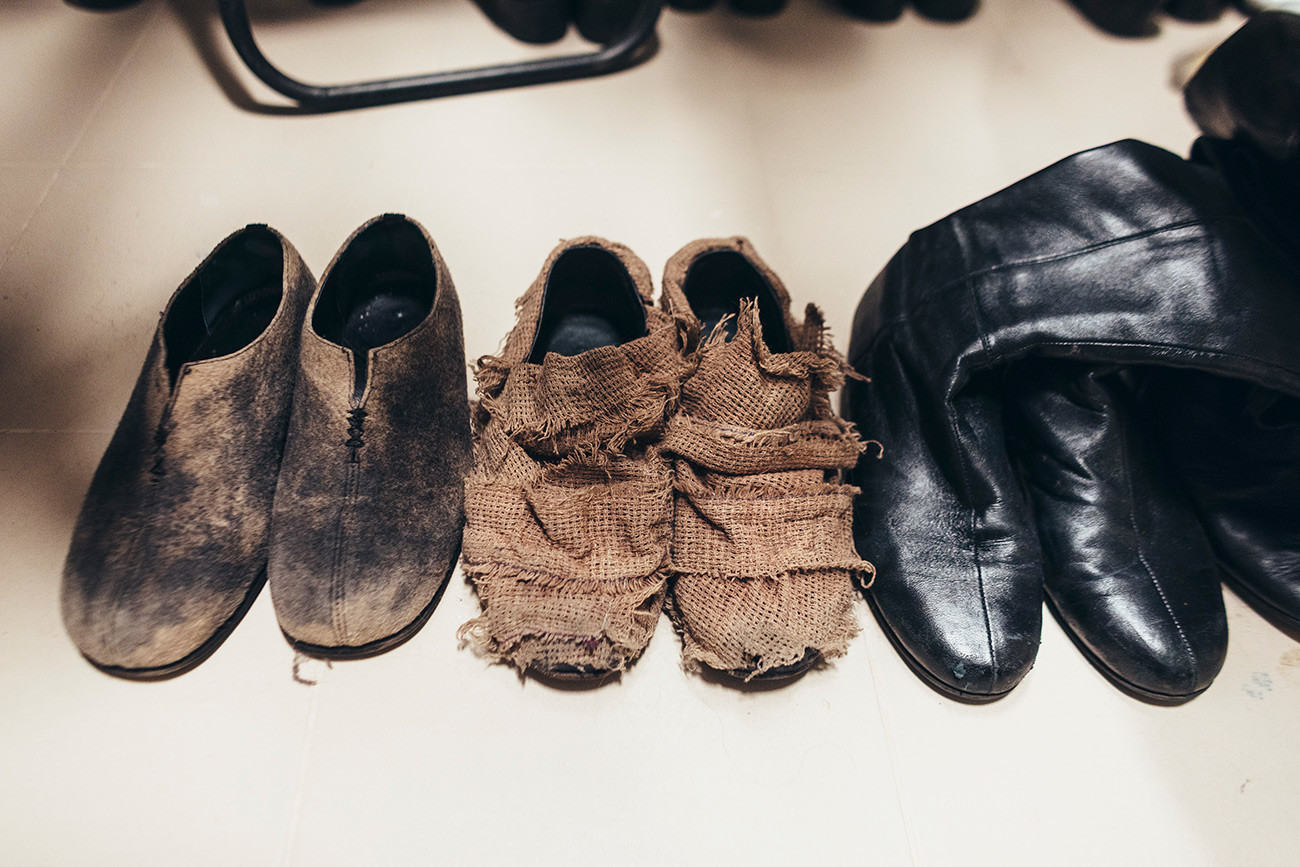
In total, over 10,000 costumes have been created for Maly productions since the theater was founded. Some of the original designs are used still and new costumes are made using 19th century technology. For example, if the costume designer decided to decorate Arkadina’s dress in “The Seagull” with real peas, so be it!
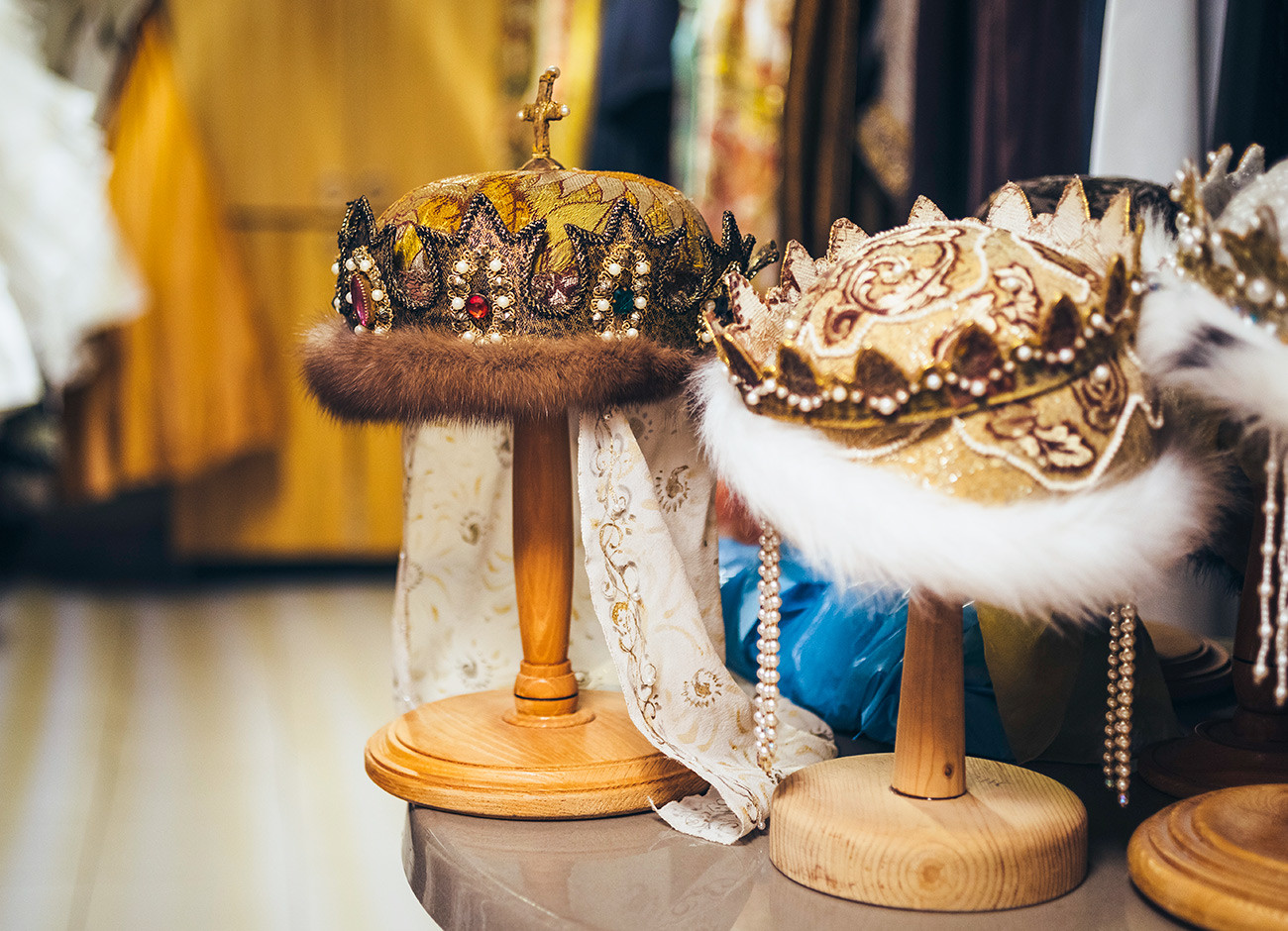
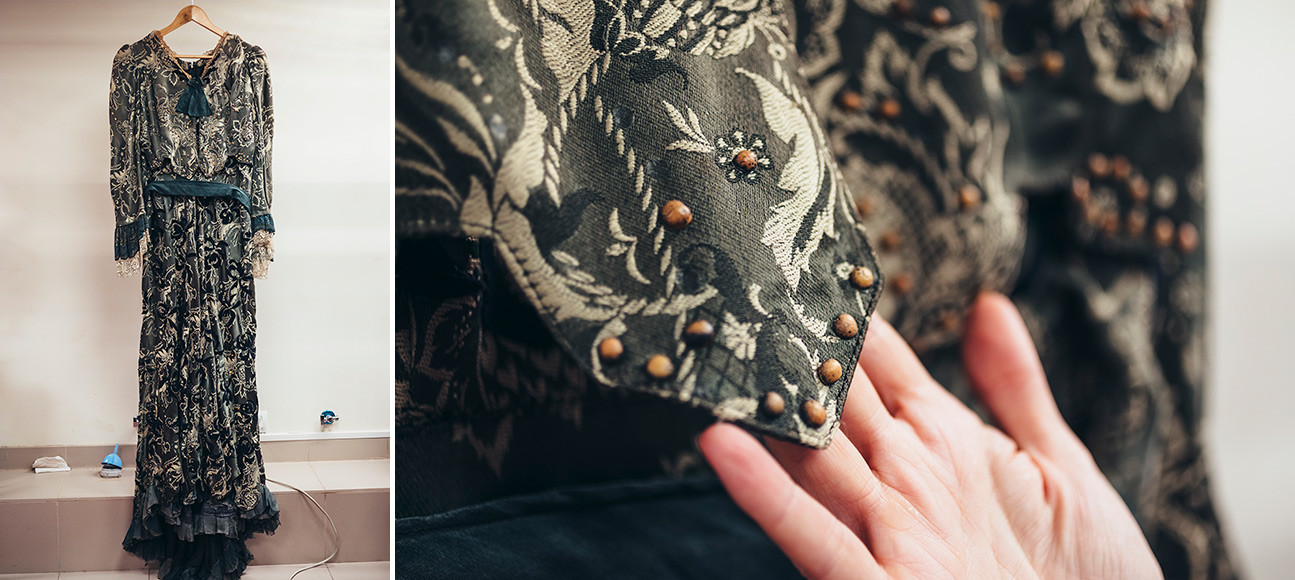
"The Seagull" based on the play by Anton Chekhov. Arkadina's costume (Arkadina is performed by Irina Muravyeva) – note the peas
Mark Boyarsky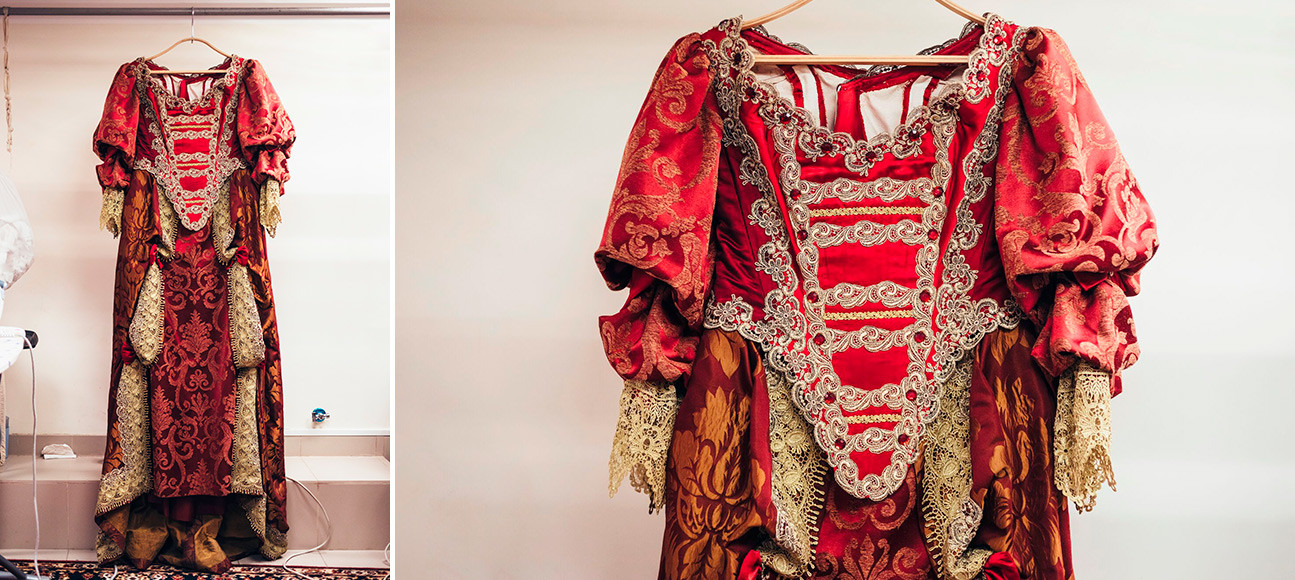
"Young Louis XIV” by Alexandre Dumas. Anna of Austria's costume
Mark Boyarsky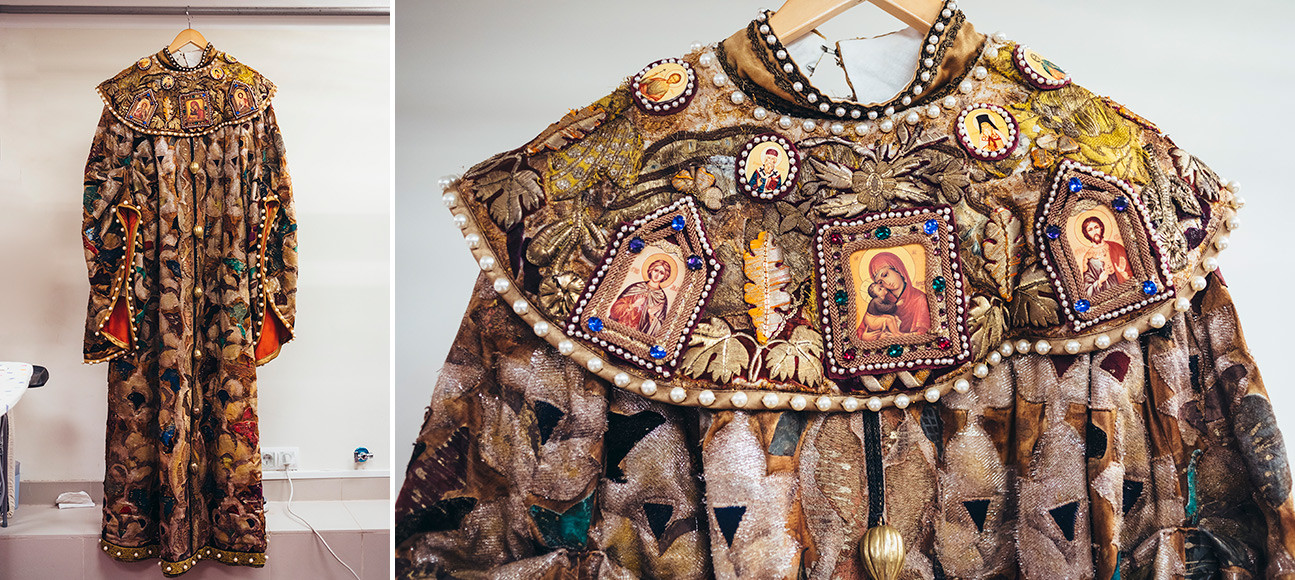
"Tsar Boris" by Alexei K. Tolstoy. Tsarina's costume
Mark BoyarskyThe head of the women's wardrobe section, Alla Zemlyakova, has been with the Maly Theater for 20 years. She speaks about costumes with incredible affection, handling them as if they were museum exhibits. She explains that on the day of a performance, the morning begins with preparing the costumes – steaming the silk sashes and checking the condition of the dresses.

"Woe from Wit" by Alexander Griboyedov. Grandmother's costume
Mark Boyarsky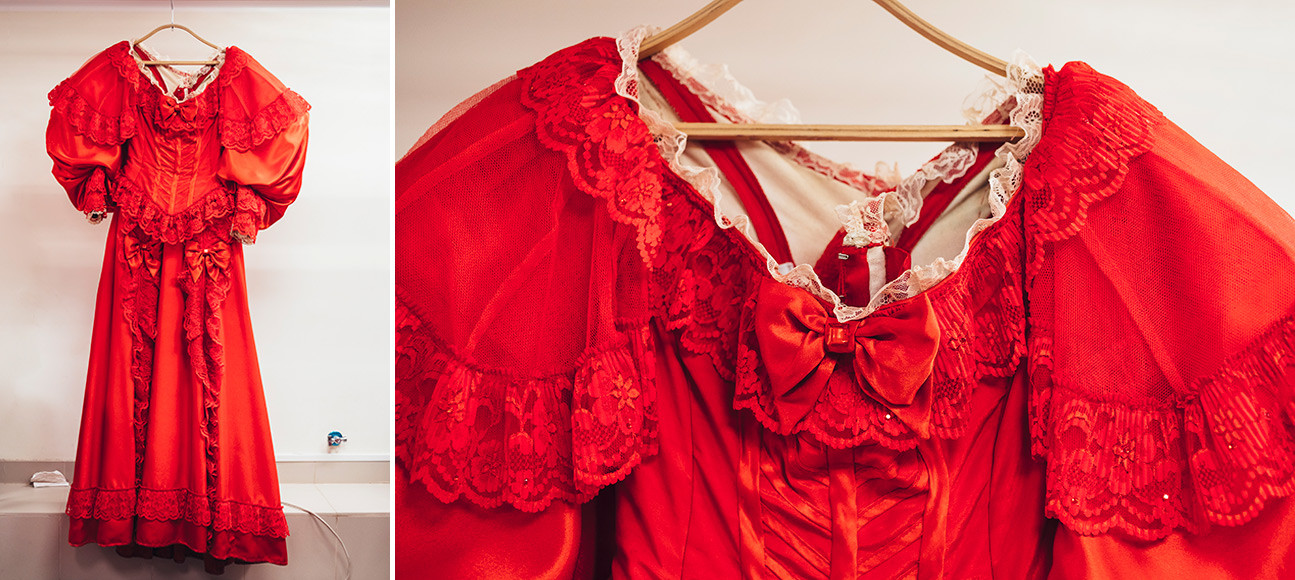
"Masquerade" by Mikhail Lermontov. Nina's costume
Mark BoyarskyNext, the costumes are taken to the dressing rooms. The special rolling racks used at the theater have become the stuff of legend. They say that even artistic director Yuri Solomin once rode them down the corridor, to entertain some of the actors’ children who had come to visit the theater.
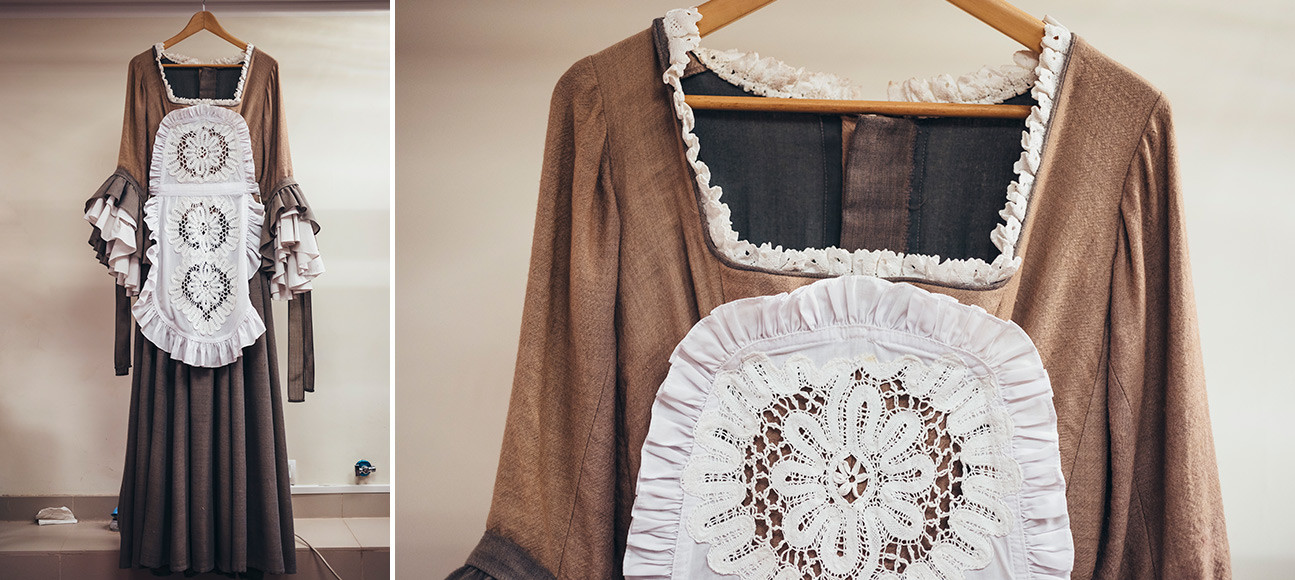
"The Imaginary Invalid" by Molière. A maid's costume
Mark Boyarsky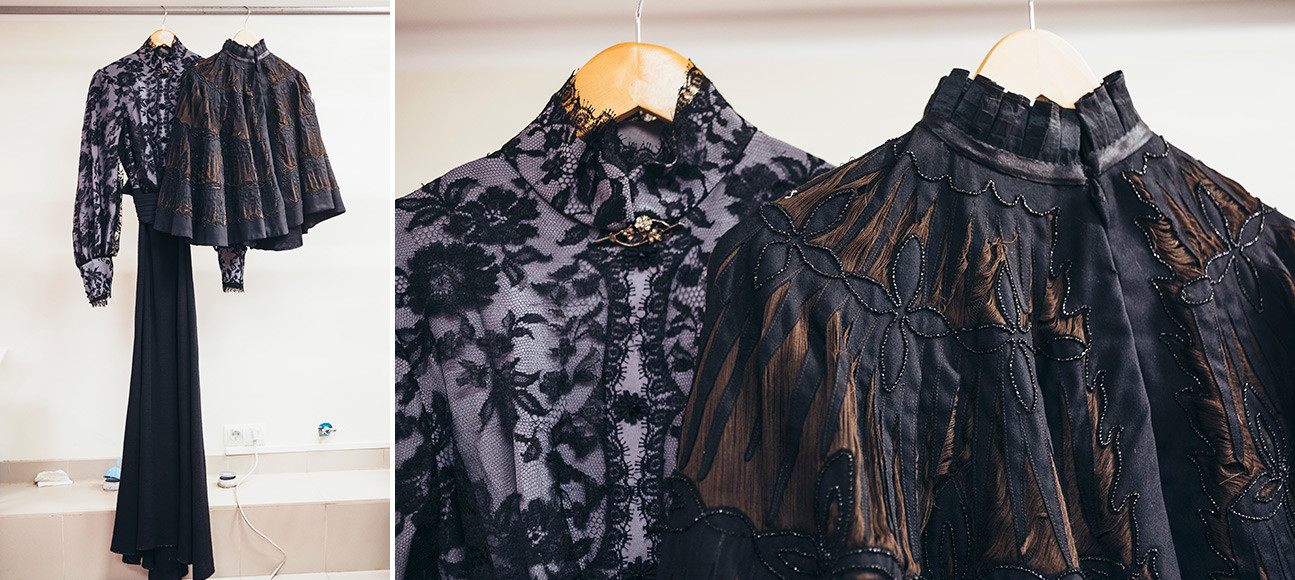
"Three Sisters" by Anton Chekhov. Masha's costume (a vintage talma cloak from the museum collection)
Mark BoyarskyBefore the performance, costumers help actresses to get dressed. “Some of the costumes are simply impossible to put on without help. Some weigh a lot, while others have complex corsets.
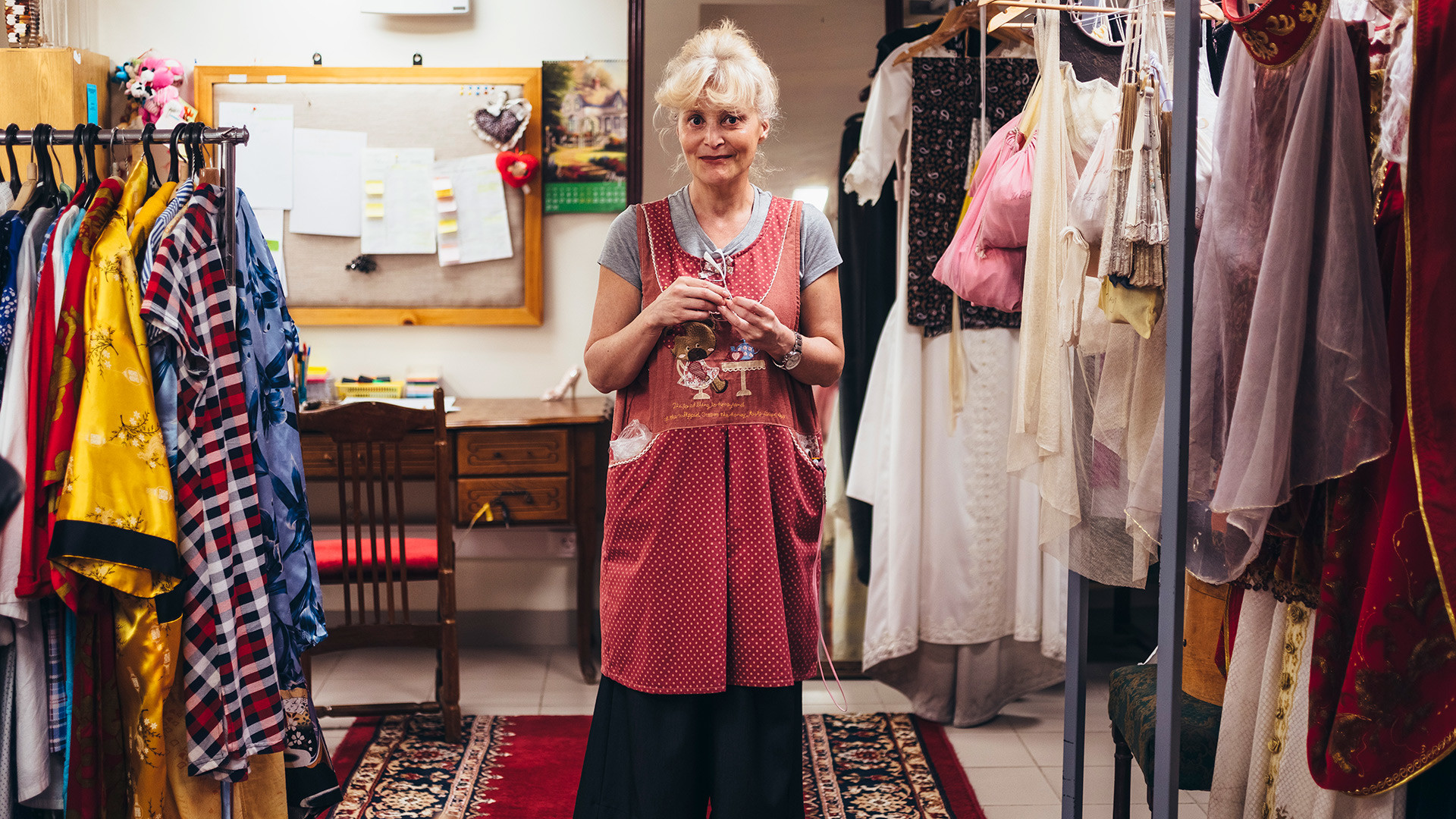
Alla Zemlyakova
Mark BoyarskyYet, what we provide is not just physical assistance. We, as psychologists, help the actresses to get in the right mood for the play, to absorb the atmosphere of the time,” Alla explains.

"Woe from Wit" by Alexander Griboyedov. Famusov's costume (Famusov is performed by Yuri Solomin)
Mark Boyarsky
“The Last Sacrifice" by Alexander Ostrovsky. Lavr Pribytkov's costume
Mark BoyarskyOnce an actress puts on a costume, she can no longer have a cup of coffee or do anything that might spoil the precious garment.
“For many actors it is very important that they wear historical costumes. They treat them with awe. Once, a pair of gloves that we bought in an antique shop for a particular production got a hole. We suggested replacing them with a modern and artificially aged pair of gloves, but the actresses flatly refused and asked us to fix the old ones to the extent it was possible.”
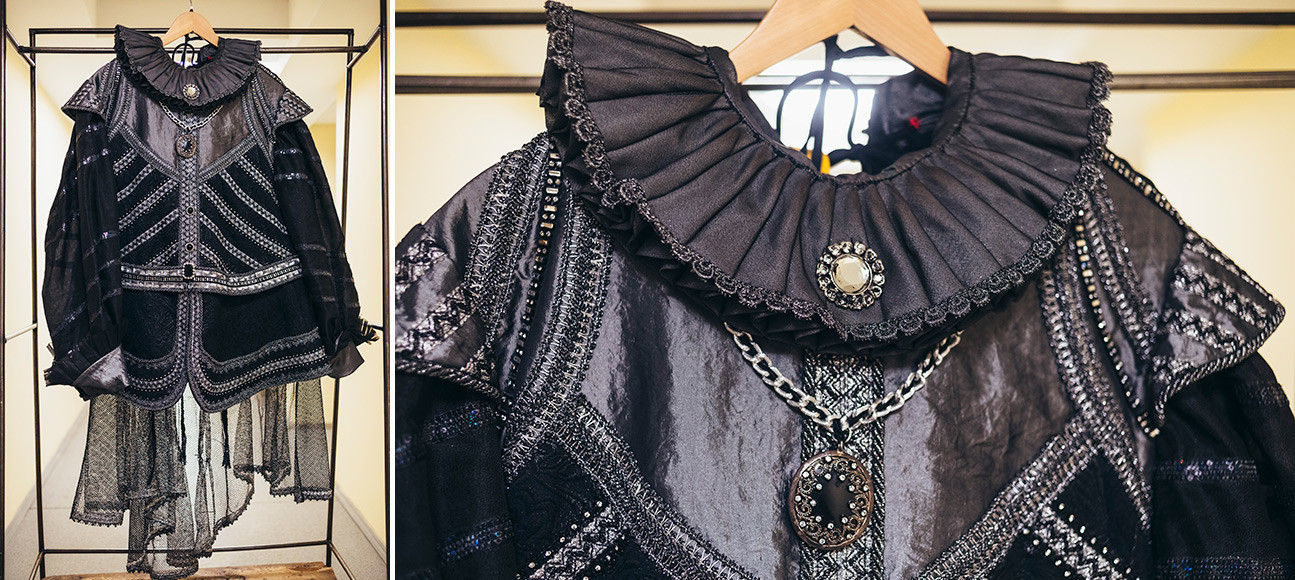
"Don Juan" musical based on a play by Alexei K. Tolstoy. The Commander's costume
Mark Boyarsky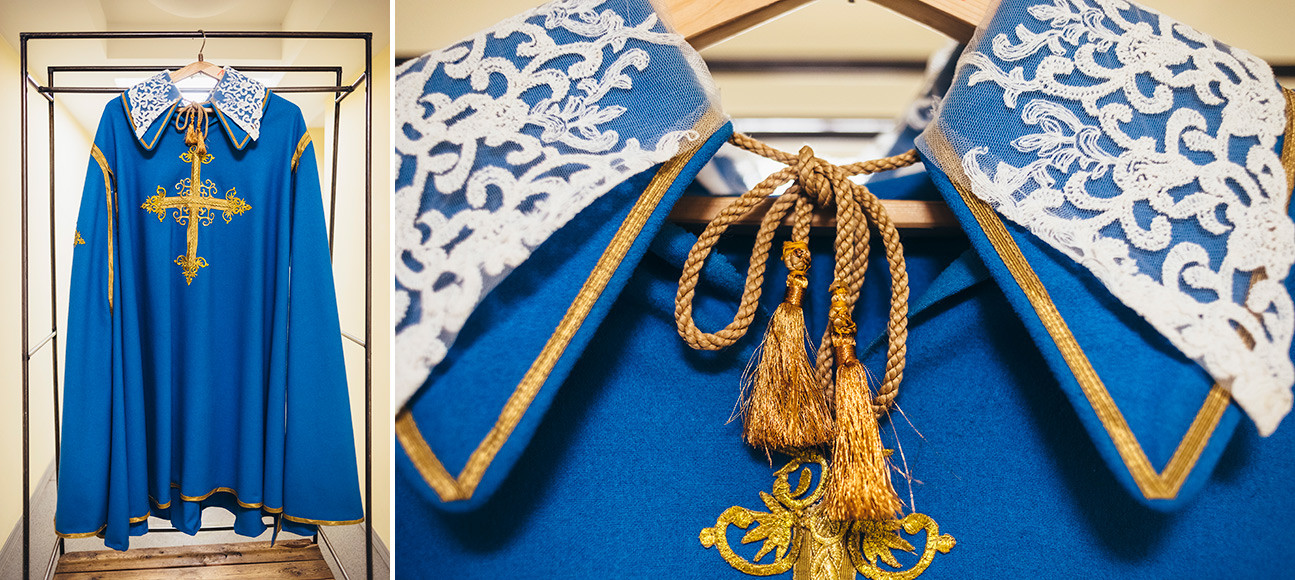
"Young Louis XIV” by Alexandre Dumas. A musketeer's costume
Mark Boyarsky
"Young Louis XIV” by Alexandre Dumas. Louis' costume
Mark BoyarskyMen's dressing rooms and the men's wardrobe section are located on another floor of the theater.
“Of course, we do not have crinoline dresses,” says the head of the section, Larisa Pasyuta, taking a gorgeous full-length fur coat from the hanger. With a twinkle in her eyes, she draws our attention to her favorite exhibits, bringing out from the store room one heavy costume after another as if they were light as a feather.

Larisa Pasyuta
Mark Boyarsky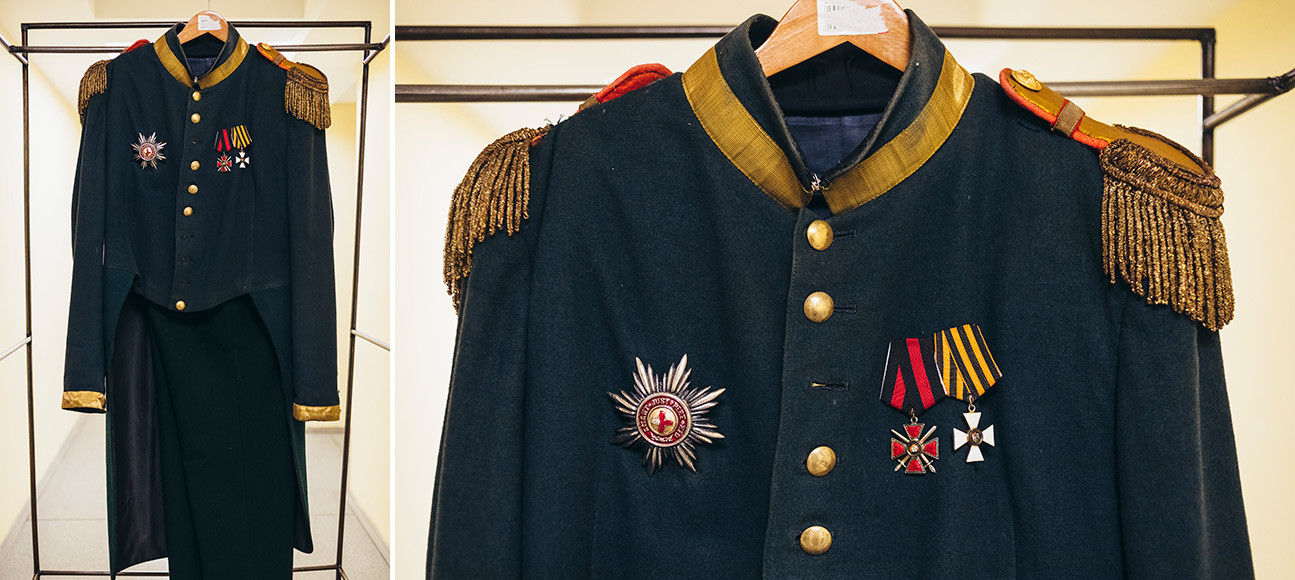
"Woe from Wit" by Alexander Griboyedov, Skalozub's costume
Mark Boyarsky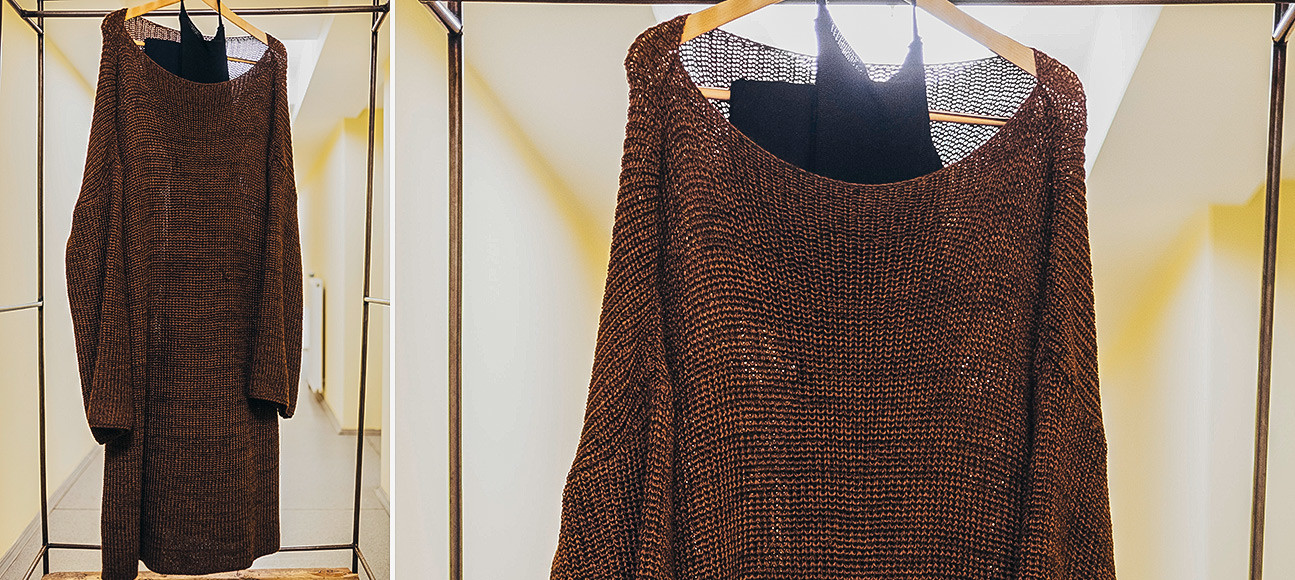
"King Lear" by Shakespeare. Lear's costume
Mark Boyarsky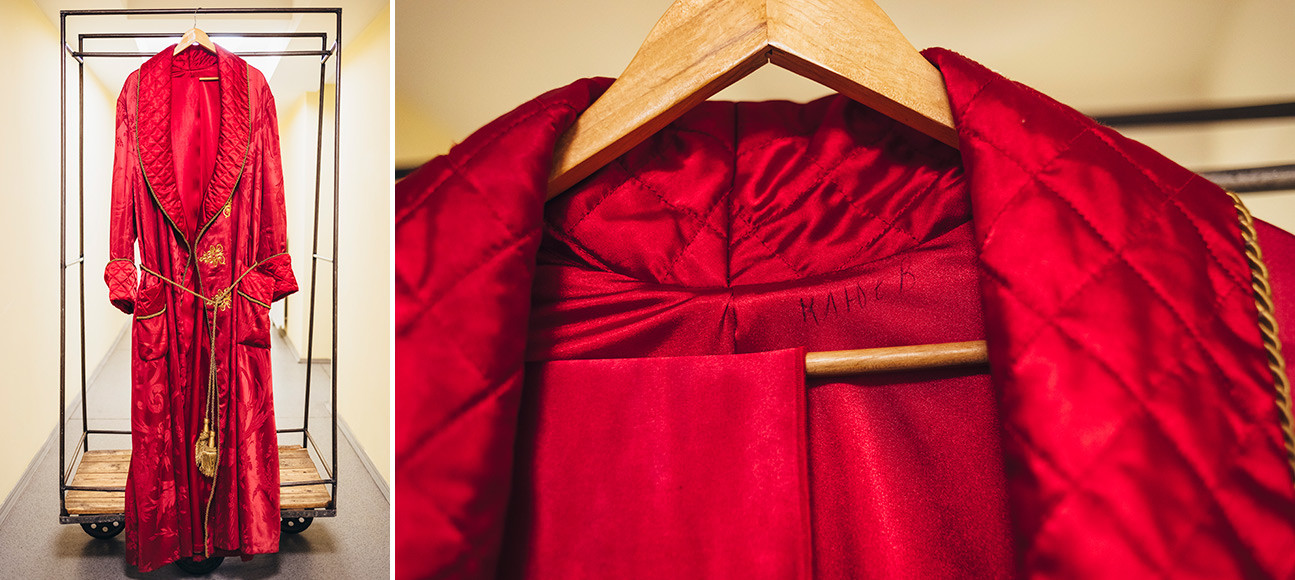
"Masquerade" by Mikhail Lermontov. Arbenin's costume
Mark BoyarskyThis section does not have the magnificent ladies' dresses of the past centuries, but boots, military uniforms, and doublets are no less exciting. A dozen snow-white gloves are drying on a coat hanger after washing. Larisa says her staff literally blow off dust from every costume.
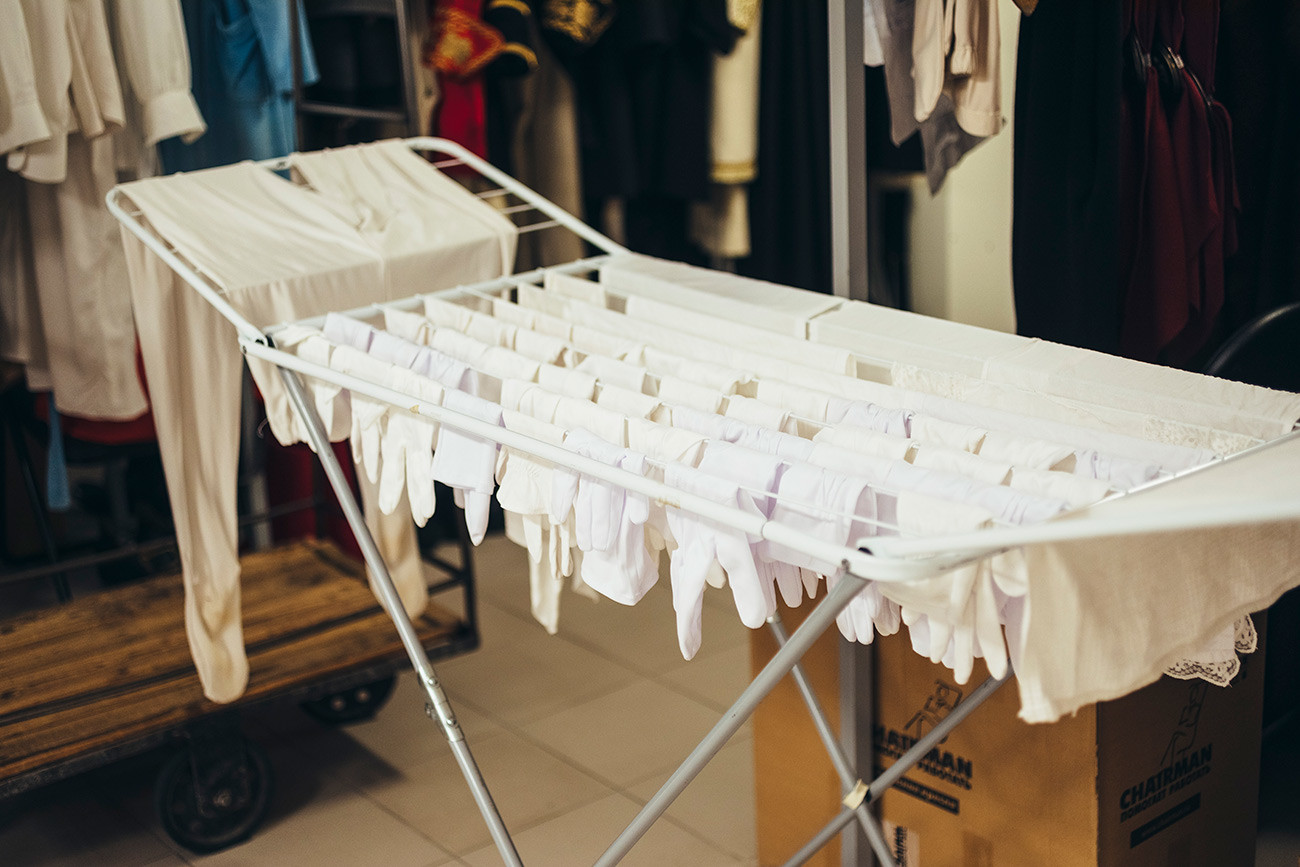
Gloves and pants can be washed, but dry cleaning is done only after the season is over: costumes cannot be removed from the theater because any one of them might be urgently needed.
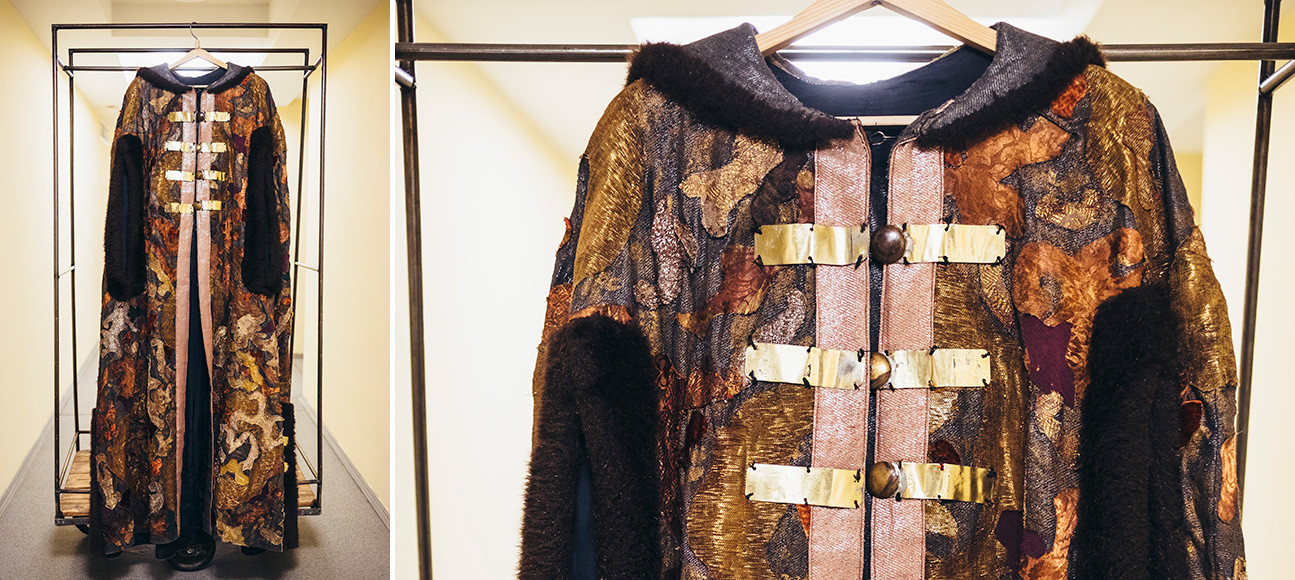
"Tsar Boris" by Alexei K. Tolstoy. Prince Golitsyn's costume
Mark Boyarsky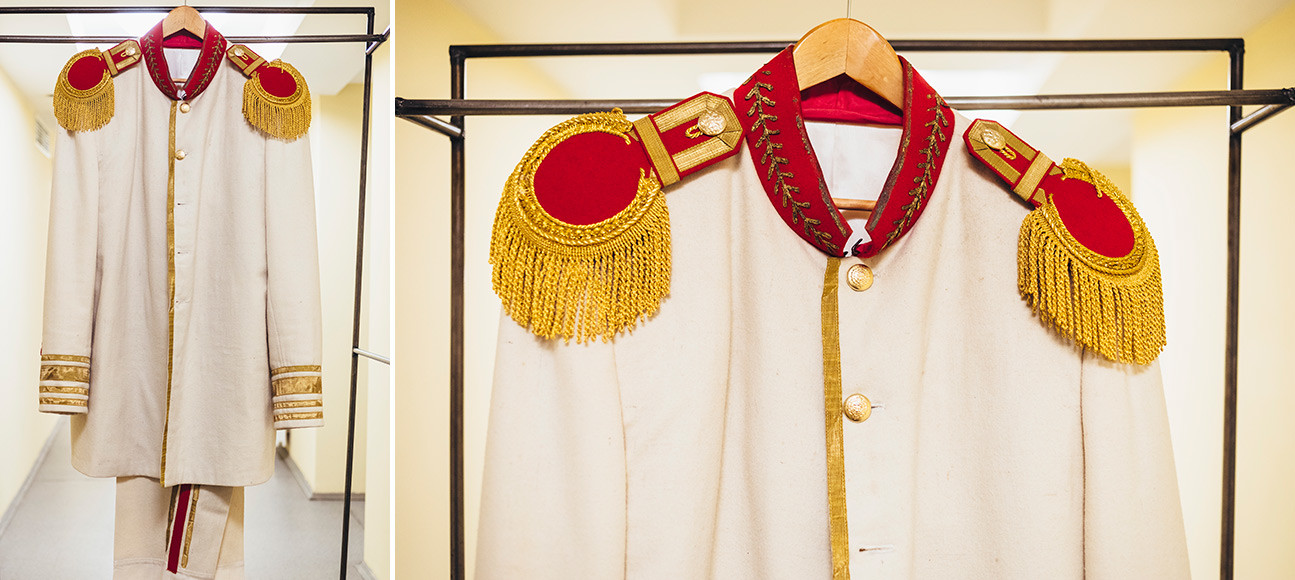
"Enough Stupidity in Every Wise Man" by Alexander Ostrovsky. Krutitsky's costume
Mark Boyarsky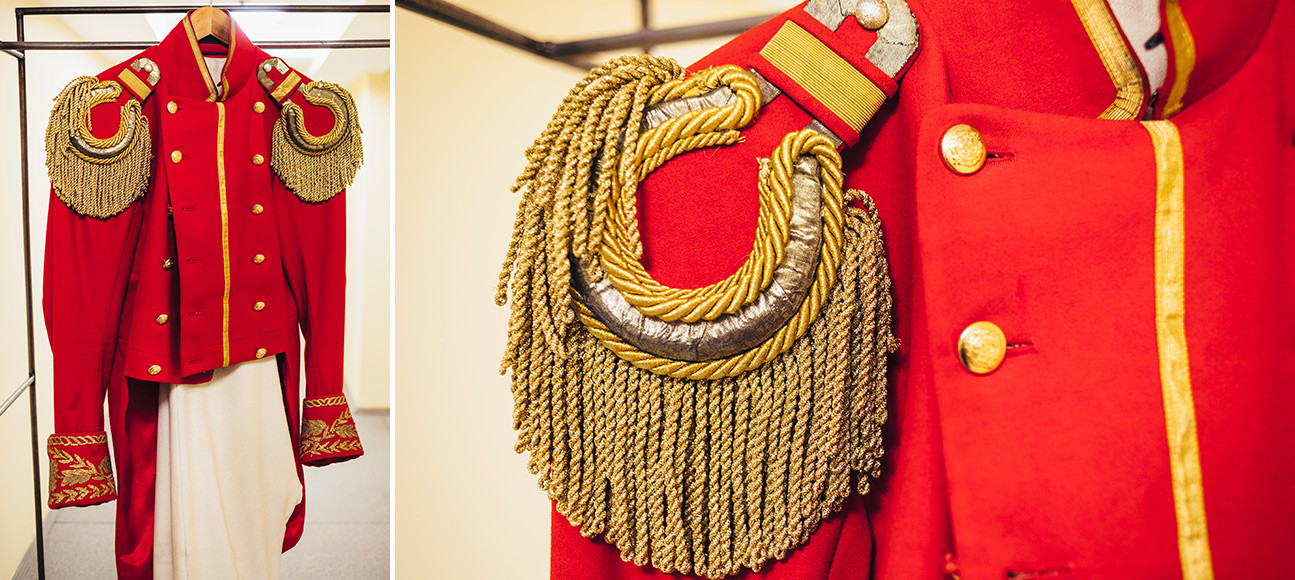
"The Queen of Spades" by Alexander Pushkin. An officer's costume
Mark BoyarskyIf using any of Russia Beyond's content, partly or in full, always provide an active hyperlink to the original material.
Subscribe
to our newsletter!
Get the week's best stories straight to your inbox